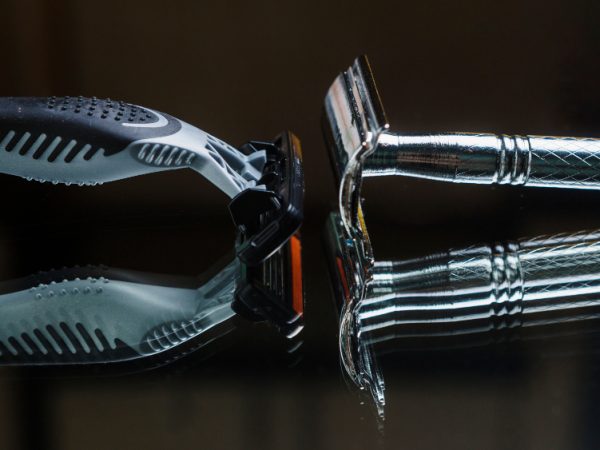Difference Between Demi and Semi Permanent Hair Color: Complete Guide

If you’re considering coloring your hair but don’t want the long-term commitment of permanent dye, you’ve likely come across two popular options: demi-permanent and semi-permanent hair color. At first glance, the names seem almost identical, but they work differently and deliver distinct results. Choosing between them depends on how long you want the color to last, the condition of your hair, and the kind of finish you’re aiming for. This guide breaks down the differences, advantages, and practical uses of demi and semi-permanent hair colors so you can confidently pick the right one for your next look.
Understanding Semi-Permanent Hair Color
Semi-permanent hair color is often described as a “short-term solution” for those who want to enhance their look without making a permanent change. It is ammonia-free and does not require a developer. Instead of altering your natural pigment, semi-permanent dye sits on the surface of the hair shaft. Because it doesn’t penetrate deeply, it gradually washes out after about 4 to 8 shampoos.
This type of dye is perfect for trying out vibrant colors, bold tones, or subtle refreshes. Many people use it to add shine, revive faded color, or experiment with fashion shades like purple, blue, or pink. Since it doesn’t damage hair, it’s safe to use frequently and ideal for beginners.
Understanding Demi-Permanent Hair Color
Demi-permanent hair color is a step above semi-permanent in terms of both intensity and longevity. It is formulated with low-level peroxide (developer), which allows the color to slightly penetrate the hair shaft. While it doesn’t permanently change the natural pigment, it creates a richer and deeper tone than semi-permanent dye.
Demi-permanent color typically lasts up to 24 washes, or about 6 to 8 weeks, depending on your hair type and how often you shampoo. It’s often recommended for blending gray hairs, enhancing natural shades, and toning highlights. Because of its longer wear, it’s a great choice for those who want a more natural look that still fades softly over time.
The Biggest Difference: Commitment and Longevity
One of the easiest ways to decide between demi and semi-permanent hair color is by asking yourself: How long do I want the color to last?
- Semi-permanent color fades quickly and evenly, making it perfect if you like to change your style often or only want temporary results for a special occasion.
- Demi-permanent color, on the other hand, provides more staying power. It won’t wash out after just a few showers, making it a better fit if you want to maintain a consistent look for several weeks without reapplying too soon.
Gray Coverage: Which Works Better?
If covering gray hairs is your main concern, the type of dye you choose matters. Semi-permanent color offers minimal gray coverage—it may stain grays lightly, but it won’t fully disguise them. Instead, the result is usually sheer and temporary.
Demi-permanent color, however, does a much better job at blending grays. While it doesn’t cover them as completely as permanent dye, it softens their appearance and creates a more natural look. Many people describe the effect as “gray blending” rather than total coverage, making it especially appealing for those transitioning to gray hair gracefully.
How Each Type Fades Over Time
Both demi and semi-permanent hair colors fade gradually, but they do so differently.
- Semi-permanent color tends to wash out quickly and evenly, often leaving no noticeable line where the color stops. This makes it low-maintenance and ideal for playful experimentation.
- Demi-permanent color fades more slowly and subtly, giving a softer regrowth effect. The fade often looks more natural because the pigment penetrates slightly deeper into the hair shaft.
Impact on Hair Health
A major reason people choose these non-permanent dyes is that they are gentler compared to permanent color.
Semi-permanent dye is the least damaging option since it contains no ammonia or peroxide. It simply coats the hair, adding color and shine without altering its structure. This makes it suitable for fragile, dry, or damaged hair.
Demi-permanent dye uses a low-volume developer, which causes very minimal lifting of the hair cuticle. While still gentle, it can slightly dry the hair compared to semi-permanent dye. However, many formulas are enriched with conditioning agents to keep strands healthy and shiny.
Best Uses for Semi-Permanent Hair Color
Semi-permanent dye is best if you:
- Love trying bold, trendy shades.
- Want to refresh faded color between salon visits.
- Need a low-commitment option for special events.
- Prefer a completely damage-free hair coloring method.
Because it fades quickly, you can switch shades often without worrying about buildup or long-term consequences.
Best Uses for Demi-Permanent Hair Color
Demi-permanent dye is ideal if you:
- Want longer-lasting results without going permanent.
- Need to blend in early grays.
- Wish to deepen or enhance your natural shade.
- Are looking to tone highlights or correct uneven color.
It provides more dimension and depth than semi-permanent, making it a favorite for those who want natural yet polished results.
Application Process: What to Expect
The application process is another key difference between these two types of dye.
Semi-permanent color is straightforward: apply it directly from the bottle, leave it on for the recommended time, and rinse. Since no developer is required, it’s quick, easy, and mess-free.
Demi-permanent color requires mixing with a low-volume developer, similar to permanent dye. The extra step means a slightly longer application process, but the payoff is longer-lasting results. If you’re new to coloring your hair, semi-permanent dye may feel less intimidating, while demi-permanent requires a bit more confidence or professional help.
Choosing the Right Option for You
The decision between demi and semi-permanent hair color depends on your goals:
- If you want temporary fun, vibrant tones, or quick shine, go with semi-permanent.
- If you need longer-lasting color, gray blending, or tonal adjustments, demi-permanent is the better choice.
Ultimately, your lifestyle, hair health, and maintenance preferences will guide your choice. Many people even alternate between the two depending on the occasion and their hair’s condition.
Conclusion
Both demi and semi-permanent hair colors have unique advantages, and neither is inherently “better” than the other. Semi-permanent is about fun, flexibility, and hair safety, while demi-permanent offers a balance between commitment and low maintenance. Whether you’re testing bold shades or seeking natural gray blending, understanding their differences ensures you’ll achieve the look you want without regrets.
FAQs
1. Does demi-permanent hair color damage hair?
No, it is very gentle compared to permanent dye. While it uses a low-volume developer, it causes minimal stress to the hair cuticle.
2. Can semi-permanent dye cover gray hair?
Not effectively. Semi-permanent dye can tint gray hairs slightly, but it won’t fully cover them.
3. How long does demi-permanent hair color last?
It typically lasts 6 to 8 weeks, or up to 24 washes, depending on hair type and care routine.
4. Can I switch from demi to semi-permanent dye?
Yes, you can switch between them freely. Semi-permanent is especially useful for refreshing demi-permanent color as it fades.
5. Which one is best for damaged hair?
Semi-permanent dye is the safest option since it doesn’t require peroxide or ammonia. It simply coats the hair without altering its structure.
Also read: Buy Arrid Antiperspirant – Strong Protection for All-Day Freshness











